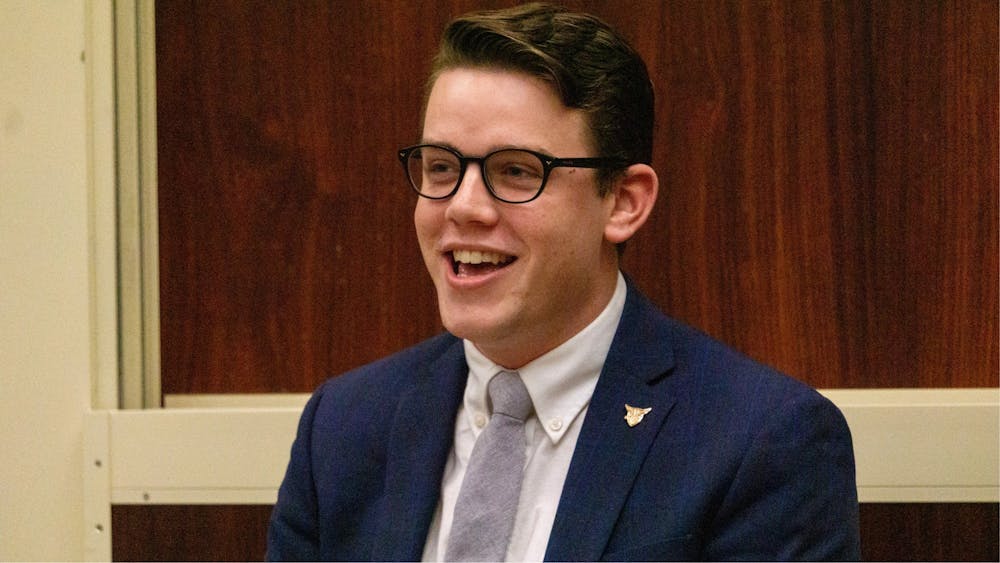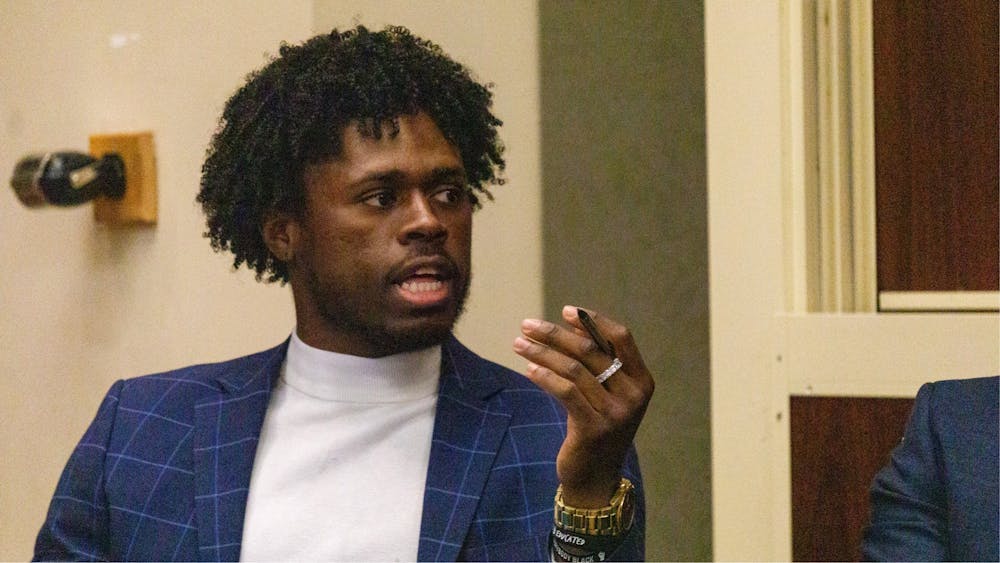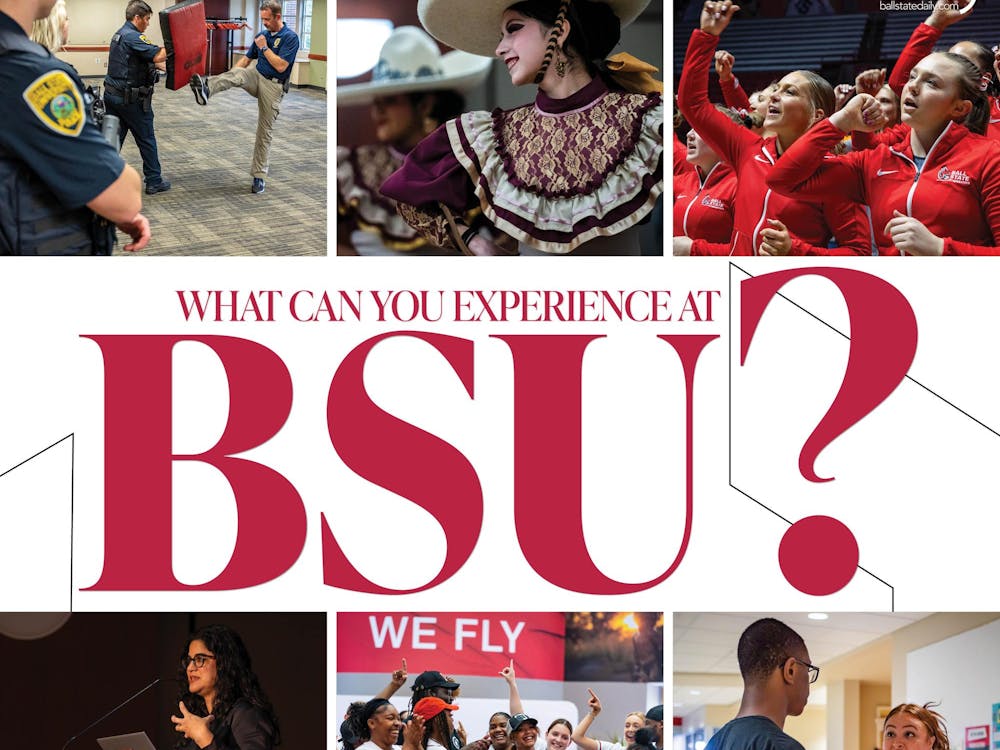Following Tuesday’s results of the first-round of Student Government Association (SGA) election, the two remaining slates — Alliance and Bold — took part in a final debate before the runoff election before an audience of around 30.
RELATED: SGA elections head to runoff after 3rd-lowest first-round voter turnout in a decade
Bold, which gained 44.16 percent of student vote, and Alliance, which gained 28.2 percent of the vote, discussed topics including the slates’ qualifications for listening to the student body, the specific goals of each slate and the slates’ vision for their legacy, in the final All-Slate Debate Thursday night at the Arts and Journalism Building.
Alliance slate members said they were better qualified to hear the issues of the student body, with vice presidential candidate Malachi Jones saying the slate’s lack of platform points and emphasis on receiving student feedback would best serve the students.
Over the course of the slates’ response to the question, the discussion shifted toward a conversation over the effectiveness of Bold’s platform points versus Alliance’s “practical approaches.”
RELATED: Meet the Ball State SGA slate: Alliance
“We can say platform points are representative of all students-- they're not,” said Alliance treasurer candidate James Schwer. “Nobody in their platform points that has talked about how the Fine Arts College is spread out among eight different buildings, and they don't have the resources to have their classrooms, to have their class meetings, they don't have the props that they need to actually get the education that they're paying for.”

SGA president Connor Sanburn introduces himself and his slate during the final SGA debate Feb. 20, 2020, at the Arts and Journalism Building. Sanburn presented his first "State of the Senate" address Sept. 30, 2020 over Zoom. John Lynch, DN
The Bold slate responded in defense of their platform-point approach, with presidential candidate Connor Sanburn saying his slate’s approach did not exclude the ability to add student input to their plans.
“As much as I love that we have both listened to as many people on campus as we can to build these kinds of ideas for our campus, we have done that research already starting last semester, and we already have the ideas to do it, and that doesn't mean that we're just going to stop there with those ideas,” Sanburn said.
RELATED: Meet the Ball State SGA slate: Bold
Later in the debate the slates were asked questions that were specific to each of their goals for the coming SGA term.
For the Bold slate, this included questions surrounding their platform that proposes adding motion-sensor lights to certain buildings all over campus.
The lights, Sanburn said, will save Ball State money and conserve energy on campus in places that formerly wasted energy by illuminating empty rooms at an estimated cost of installation around $2,000, though Bold secretary candidate Amanda Mustaklem said that figure was “flexible” based on the number of lights and buildings involved.
“We’d prefer to start in older academic buildings, as the newer buildings currently support [motion sensors], but really just working towards our entire campus being more energy efficient and making sure that the room’s energy is being used properly,” Sanburn said.
Meanwhile, the Alliance slate was questioned on the specifics of their goal of implementing “proactive, innovative solutions” to improve Ball State for first-generation, low-income, LGBTQ+ and undocumented students.
“To give one specific example of a specific change for low income [students], for example, I think there was conversation a few years back about open-source textbooks,” Schwer said. “I think that would be a great opportunity to bring back more low-income students.”
Alliance presidential candidate Aric Fulton, who is a first-generation student, said a “university-wide assessment” of Ball State’s minority populations could be helpful in determining how to best serve those populations, along with holding more community forums.
The final question of the night centered around the slates’ hopes for their legacy if elected following next week’s voting.
Sanburn said in conversation with former SGA President Greg Carbo, the former president said all platform points should be equal, but some points would be more personally important to the executive slate members.
“To me, the safe-zone training one is my baby,” Sanburn said. “I really want to make sure that this campus is as inclusive as possible, and I want to make sure that we can make an impact in the LGBTQ+ community by making sure that those students feel welcome, feel safe, and they feel supported.”
He further said using correct pronouns and working more closely with Spectrum and the counseling department were important to him.
Fulton said one of his slate’s goals will be to create more inclusive and transparent environments across campus for all students, both in SGA and its programs.
“We know a lot of students have been robbed from the opportunity of being a part of the legislative process, being a part of communities or just feeling like they belong in certain environments,” Fulton said. “I think here at Alliance we want to ensure that we're hearing every experience possible, so that we can act on that, because it's tough navigating your experience when you feel when you feel alone.”
The final round of voting in the runoff election between the two slates will take place Feb. 24 and 25. Students can vote online via the link sent to their Ball State emails, or vote in person at three voting booths which will be present on campus.
Contact John Lynch with comments at jplynch@bsu.edu or on Twitter @WritesLynch.





